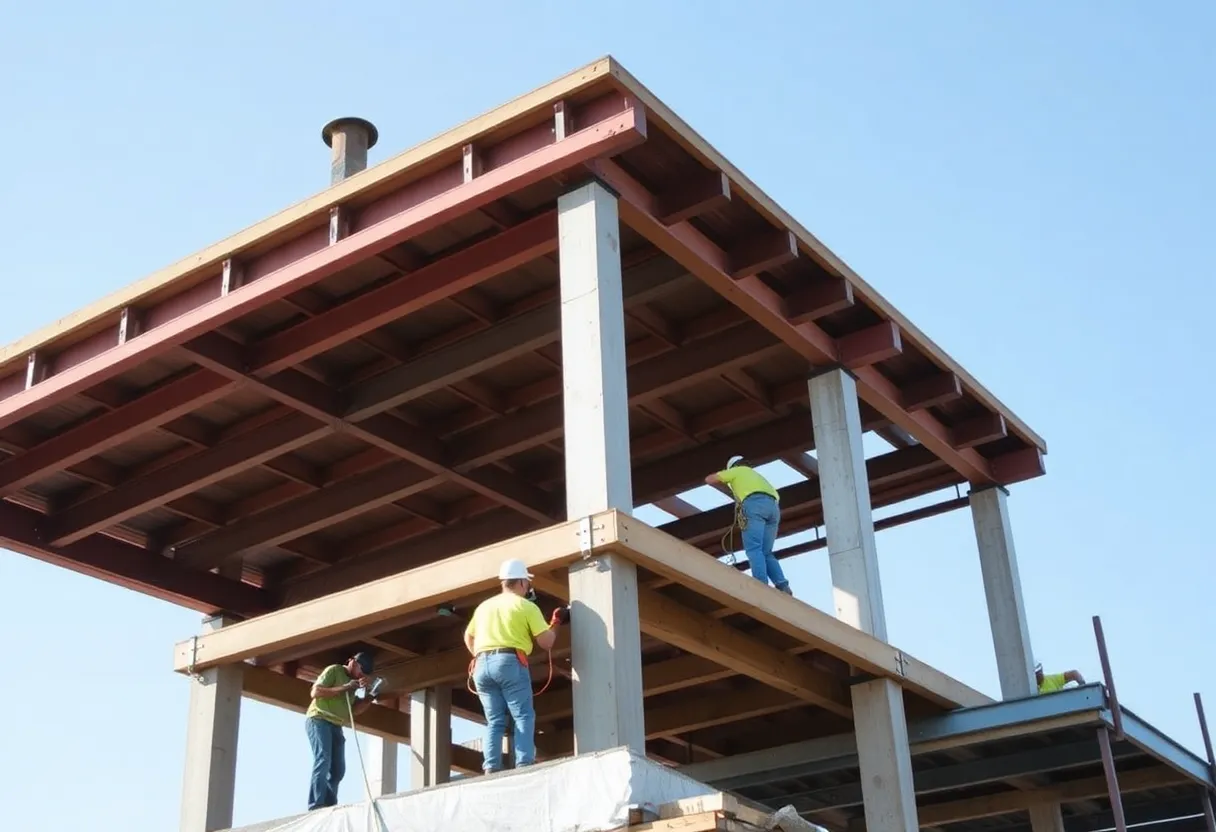Delray Beach, Fla., August 26, 2025
News Summary
A new market forecast projects strong expansion in the Building Information Modeling (BIM) market, driven by demand for real-time visualization, data integration and energy-efficient design. Growth is propelled by government mandates, modular construction trends, and integration with IoT, digital twins, cloud platforms and AI. Design and modeling software leads current market value, while consulting and advisory services are expected to grow fastest as firms seek implementation and compliance expertise. North America remains a leading regional market due to early digital adoption, infrastructure investment and smart city initiatives. The report includes detailed segmentation, revenue forecasts and competitive insights.
Global Building Information Modeling Market Set to Rise to USD 15.42 Billion by 2030, New Forecast Shows
DELRAY BEACH, Fla., Aug. 25, 2025 /PRNewswire/ — A new market forecast projects that the global Building Information Modeling (BIM) market will grow from USD 9.03 billion in 2025 to USD 15.42 billion by 2030, expanding at a compound annual growth rate of 11.3% from 2025 to 2030. The forecast is part of a detailed industry report that lays out market drivers, challenges, regional shares, and segment trends for the 2021–2030 period.
What the forecast finds
The projected growth is driven by several forces reshaping construction and infrastructure work. Increasing demand for more efficient project planning, improved cost control, and better risk management is pushing firms to adopt BIM tools that enable real-time visualization and data integration across design, construction and lifecycle stages. A rising focus on sustainable and energy-efficient buildings is also accelerating BIM use because the technology supports energy modeling, material optimization, and performance simulation.
Policy, methods and technology fueling adoption
Government mandates and policy support in multiple countries, including requirements for BIM use on public infrastructure projects, are increasing market penetration. The trend toward modular construction and prefabrication aligns with BIM’s digital workflows, while rapid technological advances — notably integration with IoT, digital twins, cloud platforms and AI — are expanding what BIM can do. Demand for BIM spans commercial, residential, transportation and industrial construction sectors.
Segment highlights
By software type, the report identifies design & modeling software as the leading segment in 2025. This segment is central to early project stages, enabling teams to build accurate 3D models, simulate performance, and spot design conflicts before work begins, which can reduce rework and costs. The report also finds a rising appetite for visually rich, data-intelligent models, especially in urban development and green building programs.
The consulting & advisory services segment is expected to post the highest CAGR from 2025 to 2030. This reflects a growing need for outside expertise to implement and scale BIM strategies, meet regulatory requirements, and train staff. Small and medium-sized firms that lack in-house BIM skills are a key source of demand for consultants.
Regional picture and market players
North America is projected to hold the largest share of the BIM market in 2025, supported by early digital adoption, government mandates, investments in smart cities and infrastructure, and a mature architecture, engineering and construction industry focused on lifecycle cost management and energy efficiency. Several established technology providers are identified as active in the market across global regions.
Report scope and practical notes
The report provides market revenue figures for 2025 and a forecast to 2030, with units in value (USD million/billion). Coverage includes revenue forecasts, a competitive landscape, growth factors and trends. Market segmentation includes offering, deployment type, project lifecycle, end user, vertical and region. Geographies covered are North America, Europe, Asia Pacific and Rest of World. The published document contains detailed metadata including 235 tables, 71 figures, and 270 pages.
Challenges and opportunities
A key challenge highlighted is delayed digital integration within the construction ecosystem, which can slow deployment and reduce potential benefits. A clear opportunity is development of digital skill programs to ready the workforce for BIM tools and workflows. Other core drivers emphasized are the need for real-time collaboration, improved efficiency, and project visualization across stakeholders.
Where to find the report and related resources
The forecast is available in a full report that offers options for inquiry before purchase and limited report customization. A PDF brochure download link and report inquiry links are provided in the original announcement. Contact information, office address and phone details were included in the source release for those seeking more information.
Why this matters for project teams and suppliers
For contractors, architects, suppliers and technology vendors, the projected market growth signals continued investment in digital design and delivery tools. Design & modeling software leadership suggests ongoing demand for tools that improve early-stage planning and coordination. Rapid growth in consulting services indicates a sustained need for implementation support, training and compliance help as more governments and large projects require BIM-based workflows.
Key report facts at a glance
- Market value in 2025: USD 9.03 billion
- Forecast value in 2030: USD 15.42 billion
- Forecast CAGR (2025–2030): 11.3%
- Report length: 270 pages
- Tables and figures: 235 tables, 71 figures
- Coverage: Offering, Deployment, Lifecycle, End User, Vertical, Region
FAQ
What is BIM and why is it growing?
BIM stands for Building Information Modeling. It is a set of digital tools and processes used to create and manage building data across a project’s life. Growth is driven by needs for clearer planning, cost control, better coordination, sustainability features and regulatory requirements.
How big will the BIM market be by 2030?
The market is forecast to reach USD 15.42 billion by 2030, up from USD 9.03 billion in 2025, at a projected CAGR of 11.3% between 2025 and 2030.
Which BIM segments are expanding fastest?
Design and modeling software leads in market size due to its role in early-stage project planning. Consulting and advisory services are expected to grow fastest as more firms seek outside help to implement BIM and meet regulations.
Which regions lead BIM adoption?
North America is expected to hold the largest market share in 2025, supported by early digital adoption, public infrastructure mandates and investments in smart city and sustainability programs.
What are the main barriers to faster BIM adoption?
Key barriers include delayed digital integration across project partners, gaps in workforce skills, and the need for better change management within construction organizations.
Key features table
| Feature | Detail |
|---|---|
| Forecast period | 2025–2030 |
| Market value (2025) | USD 9.03 billion |
| Market value (2030) | USD 15.42 billion |
| Projected CAGR | 11.3% |
| Top software segment (2025) | Design & modeling software |
| Fastest-growing segment | Consulting & advisory services |
| Regional leader | North America |
| Report size | 270 pages; 235 tables; 71 figures |
| Report topics | Revenue forecast, competitive landscape, growth factors, trends |
Source: market forecast release dated Aug. 25, 2025. Report brochure and inquiry links are available from the forecast publisher for those seeking the full dataset and methodology.
Deeper Dive: News & Info About This Topic
Additional Resources
- The Malaysian Reserve: Global Building Information Modeling Market Forecast
- Wikipedia: Building information modeling
- Palm Beach Post: Best quiet secluded Florida beaches (2025)
- Wikipedia: Beaches of Florida
- Palm Beach Post: Taste of Recovery culinary festival (Lake Worth Beach)
- Google News: Lake Worth Beach Taste of Recovery festival
- Livability: Can’t afford to live in Miami? Live here instead
- Google Search: affordable places to live near Miami
- Palm Beach Post: Jimmy Buffett — skin cancer and Merkel cell carcinoma article
- Encyclopedia Britannica: Skin cancer
Author: Construction FL News
The FLORIDA STAFF WRITER represents the experienced team at constructionflnews.com, your go-to source for actionable local news and information in Florida and beyond. Specializing in "news you can use," we cover essential topics like product reviews for personal and business needs, local business directories, politics, real estate trends, neighborhood insights, and state news affecting the area—with deep expertise drawn from years of dedicated reporting and strong community input, including local press releases and business updates. We deliver top reporting on high-value events such as the Florida Build Expo, major infrastructure projects, and advancements in construction technology showcases. Our coverage extends to key organizations like the Associated Builders and Contractors of Florida and the Florida Home Builders Association, plus leading businesses in construction and legal services that power the local economy such as CMiC Global and Shutts & Bowen LLP. As part of the broader network, including constructioncanews.com, constructionnynews.com, and constructiontxnews.com, we provide comprehensive, credible insights into the dynamic construction landscape across multiple states.





